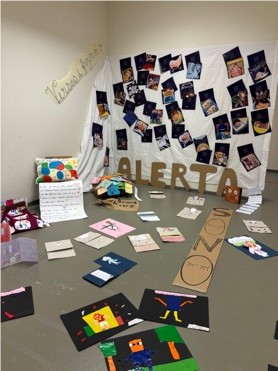Problem addressed or learning needs
The problem addressed was the quality of sleeping and its importance for children's development. In this project the learning needs addressed were:
- development of students' scientific and logical thinking in real contexts;
- practical application of mathematical concepts
- enhancement of digital skills
- adoption of healthy behaviours
- collaborative work encouragement.
The educational goals pursued by the analysed best practice were:
- Cognitive: Understanding the relationships between sleeping routines and the implications on the performance of everyday activities.
- Metacognitive: Reflection on sleeping habits and how they affect health.
- Collaborative: work collaboratively to develop teamwork.
- Creative: Artistic production
Types of enhanced competences
- Basic coding skills development
- Logical reasoning and problem solving
- Digital literacy and the use of presentation tools
- Knowing how to make healthy decisions
Subjects involved
Humanities, Technologies\Engineering, Math, Natural Science, Civic education, Arts
Duration and timeline of implementation
This project featured weekly meetings among teachers and was developed during a term (3 months).
Each area had an hour assigned per week specifically dedicated to the development of the project.
At the end of the project the institution organised a wor
Strategies and activities
To implement the activity, the group of teachers designed a project plan that was adapted according to the needs of students and teachers.
Teachers held weekly meetings to discuss the implementation process in the several classes involved.
It was developed in a cross curricular approach and involved the following areas and activities:
- Science:
Presentation of the results of research on sleep and its impact on health
Research on environmental factors that determine sleeping quality.
- Technology:
Research and creation of digital presentations,
Scratch programming - students program a path of pre-sleeping routines, with choices of behaviors that promote or disrupt sleeping.
- Engineering: Design and construction of models (room). Sleep alert mascot mask
- Arts: Paintings.
- Mathematics: Problem solving, Statistical questions, organization, interpretation and analysis and dissemination of results.
- Citizenship: Adoption of collective behaviors of respect for the quality of sleep in the community.
Material Sources
The material sources used were:
- Computers, tablets
- PowerPoint, video, mentimeter, Scratch.
- Reused materials: fabric, plastic, cardboard.
- Pillows, sheets, tweezers, paper, cardboard.
Methodology
Team Work, Cooperative Learning, Storytelling, Inquiry-Based Learning, Inquiry-Based Science Learning, Digital Storytelling, Technology-Enhanced Active Learning (Teal), Debate
Impact
This project involved 225 students, 14 teachers and 2 schools.
Observed Benefits
The observed benefits were:
- Improvement of the health literacy of students and the community.
- Awareness about healthy sleeping routines.
- Acquired notion of sleeping as a lifestyle.
- Development of digital and communication skills.
- Stimulation of creativity and critical thinking.
- Strengthening collaborative work and respect for others.
Challenges Faced
There was an unequal involvement of students' families in the proposed activities, the students showed an uneven level of health literacy and showed different levels of digital competence which led to difficulties in using digital tools.
Key Success Factors
The keys to success were:
- the motivation of the teaching staff.
- the existence of accredited training for teachers and non-teaching staff.
- the existence of training for Parents, within the scope of a project being held at school, the Parents' School project.
- the cross curricular approach.
- the strong involvement of students in activities.
- use of accessible and motivating digital tools.
- articulation with other projects under development in the institution.
- community articulation as a vehicle for the dissemination of the activities developed by the students (exhibitions and workshops at school and within the community with the collaboration of the municipal library).
Future Improvements
- Engagement in more dissemination activities
- Organise workshops dedicated to families with less literacy on the topic.
- Use of simple and intuitive digital tools with the focus on critical and logical thinking so the students can make healthy choices.
Recommendations
Continuous and systematic work with the local Health Care Centre.

